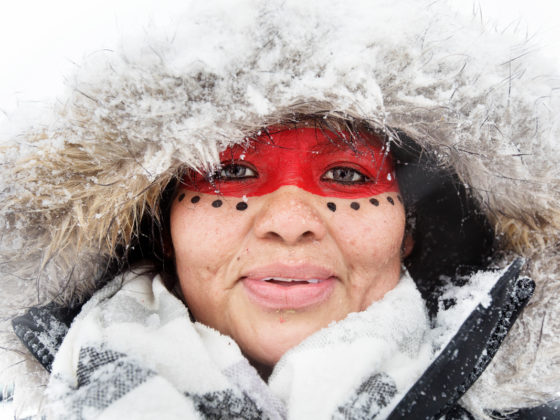
Building from Agreements
THE VISION AT STANDING ROCK
At the end of 2016 I accompanied a supply bus from Seattle to Standing Rock. It was a beast of a bus, loaded with arctic gear, an advanced radio with solar panels, horse feed, heaters, and propane, and seven passengers grasping for clues on what to expect when we got there.
I had read everything I could about Standing Rock and talked to a few friends who had already gone and come back. The call to “protect the water” seemed logical to me, and yet the last 48 hours had muddled my resolve.
In the two days leading up to our arrival, the political and cultural landscape of Standing Rock had significantly shifted, and the new direction had not yet been chosen. Following the uptick of media coverage in late November, after the authorities and private security had water cannoned the protectors, each side had upshifted its maneuvering. Shortly thereafter, two thousand veterans had committed to deploy by December 5th and serve as body shields for the water protectors.
The Governor of North Dakota ordered the camps to disband, claiming “concerns for public safety.” A police blockade stood on highway 1806, north of the camps. A $1000 fine was threatened for anyone risking access.
The first signs of the unforgiving great plains winter had moved in.
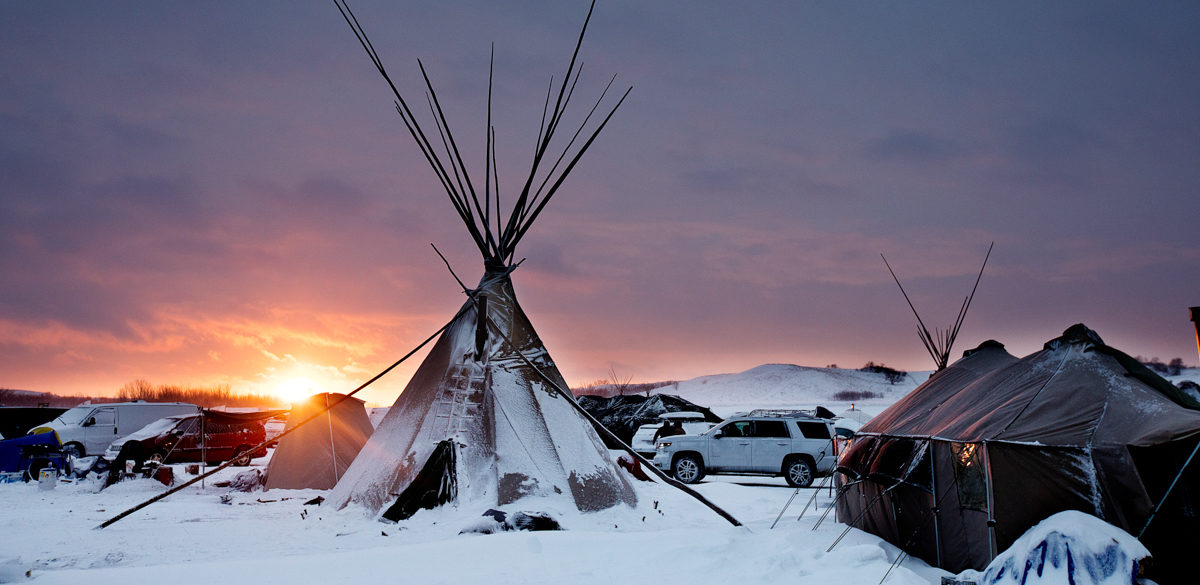
Still, people kept coming. At its peak Standing Rock neared 15,000 occupants. Finally, on December 4th, the Army Corps of Engineers denied the permit necessary for the pipeline to complete its last stretch under Lake Oahe, also known as the Missouri River, the only water source of the Lakota Sioux tribe and the main supplier of drinking water to much of the region.
Energy Transfer Partners issued a letter to their shareholders condemning the decision as “illegal” and temporary.
David Archambault II, the tribal chairman, announced that it was time for everyone to “go home.” Others said, “if you are prepared, don’t stop coming.” Drone videos surfaced of continued drilling on site, and security personnel shooting the drones. The first blizzard hit.
We headed into everything that came after.
We drove in silence or in spurts of conversation, trying to clarify our reasons for going. One fellow rider, a veteran and a seasoned activist, was there for action. He and I carried on during the drive debating the effectiveness of nonviolence. Basically the age old debate between ends and means.
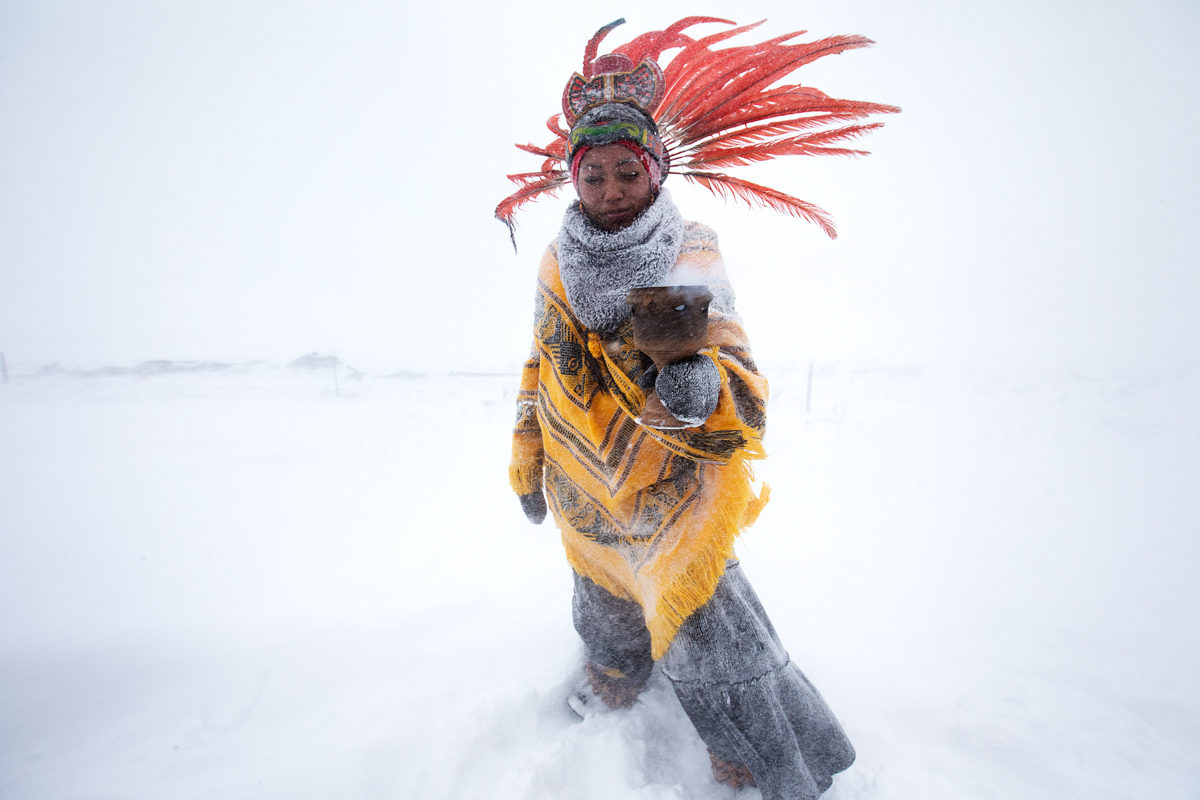
Our driver came to deliver the supplies and to make sure everyone got back safely. In our own ways, we all came to witness. I came because I sensed that something unique was happening there, something that could help me contextualize the America we all woke up to on November 9th.
We went in through South Dakota, to avoid Bismarck. We had contacts at camp but communication was scarce. Our first stop was to drop off the heaters at the Prairie Knights Casino at Ford Yates. Prairie Knights had become the evacuation point for those escaping the blizzard. Its floor resembled the Super Dome following Hurricane Katrina, people strewed about in sleeping bags waiting for a way out.
While we waited for our contact at the neighboring gas station, I looked for something to orient me. There was a wild quality to the air, as if we had just driven into some otherworldly and extraordinary social climate.
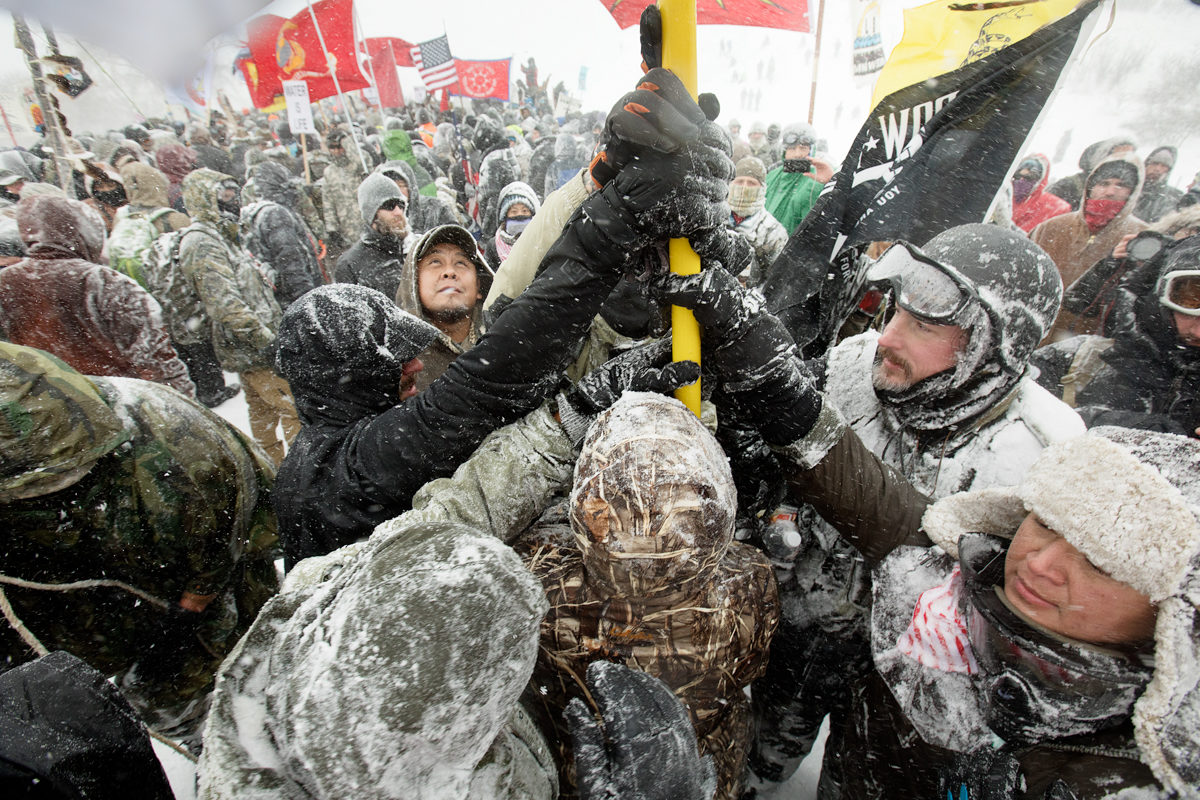
“I’m leaving,” a blond woman said to me. Snow melted from her nose ring. She had a tired look and avoided my eyes, her gaze defusing somewhere in the periphery.
“Just, so much…” she said. “It got really disorganized really fast and people started pulling into different directions. Too many messages. It’s time for me to go home,” she said, smiled faintly and turned her eyes back to the aisle of canned foods.
There are four main categories of Water Protectors: The indigenous, the largest gathering of tribes in 100 years; seasoned environmentalists, protesters, and conscious lifestyle enthusiasts; allies contributing special skills and trades, prepared for the environment; and other allies called to this place by its sheer gathering momentum, not necessarily prepared but well meaning. Some had come with tents and good vibes. The abandoned tents now lay under snow cover throughout the camps. The vibes had transformed to exhaustion or a hardened resolve.
In part, it felt like grief, the atmosphere we had encountered still ten miles from the camps.
I saw a man in fatigues and a black cowboy hat, smoking and pacing in small but confident steps. He greeted me cleanly and clear-eyed. I directly asked the question on my mind, “What is the mood like at camp?”
“Today is tough. We had just lost our first child. A miscarriage.” He said this in some clean and open way, both honoring the loss and, as if in this gesture of transparency, welcoming me to camp.
He then handed me his contact information. “Indigenous security. We run security for the camps. If you need anything, let us know.”
Even now, writing this, I find a hesitation in how much I want to reveal. What does this disclosure serve? Am I betraying confidence? I live, in part, in a tactical culture, one that masks its uncertainties and grief and other loses. And yet, the straightforward admission of something so deeply personal on his part genuinely felt like an invitation. As if he had said, “If you have come to stand with us, you are part of the tribe.” It felt important, orienting. It felt like our first agreement — trust. And so in writing this I risk to honor this gift of transparency and offer everything I saw.
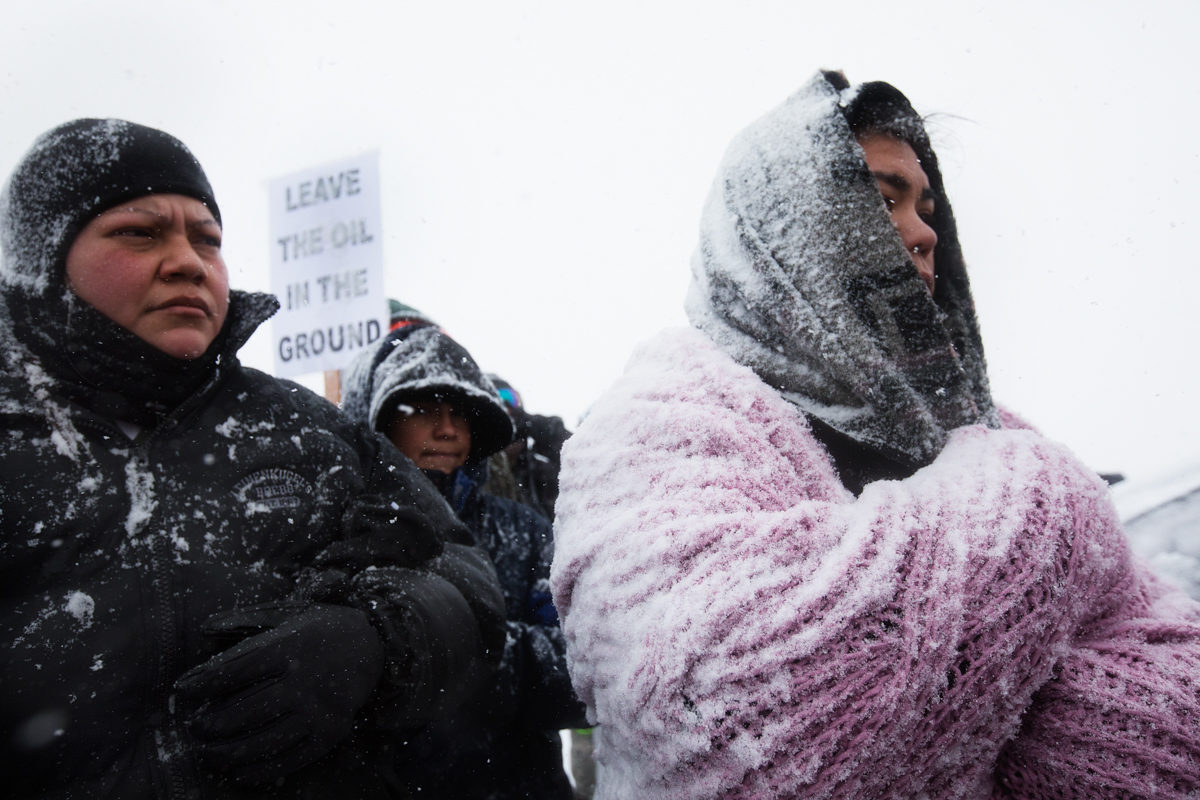
Driving up to the camps the chaos-sense tightened again. No one could advise us on where to make our drops. Some people seemed to be in a focused trance, the kind that comes out of working outside in -14 degrees.
A group at the first work station we sighted in Oceti Sakowin was assembling compostable toilets. They worked hurriedly but tried to guide us along. They also asked if we had winter shoes and balaclavas we could give them. I promised to bring some back as soon as we unloaded the bus as all the winter gear was tightly packed under other supplies. We moved on.
There are now three main camps at Standing Rock: Sacred Stone, on the property of LaDonna Brave Bull’s property; Oceti Sakowin, the place of the main sacred fire; and Rosebud, a support camp primarily filled with allies from the Pacific Northwest. When we drove up to Sacred Stone a greeter at the entrance boarded the bus and politely asked, “Do you have anything shameful on the bus?” We knew what he meant — drugs, alcohol, and weapons — but the question still startled us.
Standing Rock is a unique movement. It is a place of spiritual resistance. In April, when it became clear that the pipeline was coming, 200 riders on horseback arrived at the then empty site and lit a first sacred fire to signal their prayer, and they set up camp. They prayed to stop the black snake, a Sioux prophecy stating that a large snake will cut the land into two and turn it black.
To the indigenous community, the Dakota Access pipeline is that snake, and their purpose was to open up all the windows and doors to their land so that others could see and come to stand with. There are now countless flags in the camps — of tribes, of world nations, and new flags created to symbolize a new purpose — to protect the sacred.
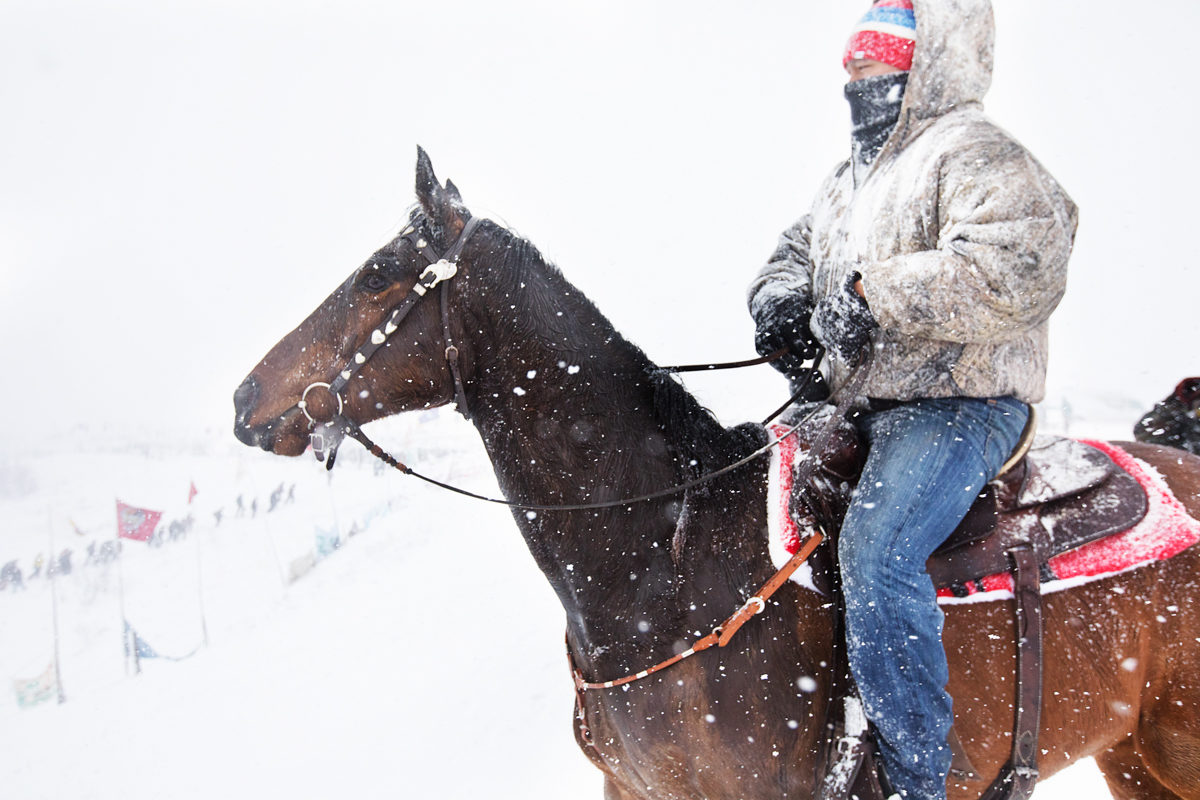
Primarily, the resistance has been ceremony focussed, though there have been debates — as it often happens in any movement — on diversifying tactics. Yet, the guiding intention–to stay spirit-centered and spirit-guided–has remained. The call is not from some organization or political party. The Lakota admit that the call to protect the sacred is a world call and they have simply heard it first. So when asked if we have anything shameful, it may not merely be a question of possessions, but of intentions.
We dropped off the horse feed at Sacred Stone and moved on to find another location. At Oceti Sakowin, where a continual prayer is sung through a microphone, we dropped off our radio. Then we went to Rosebud where we finally met up with one of our contacts, D.
D is a seasoned permaculturalist. She had originally arrived at Standing Rock at the beginning of fall, not knowing what her role would be but trusting that it would be revealed. She first began with direct action. Before anyone takes direct action they must go through hours of training. During training, one must write down a number between 1 and 5. This identifies the depth of perimeter one is willing to hold around in a ceremony.
D ended up on an inside perimeter, protecting a group of grandmothers in prayer during a precession to an indigenous burial site blocking the pipeline. As the arm of the bulldozer lowered, security personnel surrounded the women. Tear gas was used. The perimeters began to crack. D had to make a choice. Just a few steps on the slope below her a grandmother was praying. The authorities were choking off the way back. People were running. D slipped on her mask and wet handkerchief and jumped atop the grandmother to shield her. All the women were arrested that day, their hands zip tied. The dig had to be postponed. A herd of wild buffalo appeared out of nowhere just as the women were led away. After their release the elders approached D and asked her to care for the grandmothers on the days they are in camp.
D helped organize our drop. The camp was clearly transitioning. Garbage bags stuffed with clothing mounted in the snow. Two white men tirelessly chopped wood at the center of the camp. Coughs could be heard throughout as everyone had at least some moisture in their lungs. After unloading, I grabbed a few pairs of winter shoes and balaclavas from our supply and went to find the original group we had seen. A large brown haired dog walked with me across the ice from Rosebud to Oceti Sakowin.
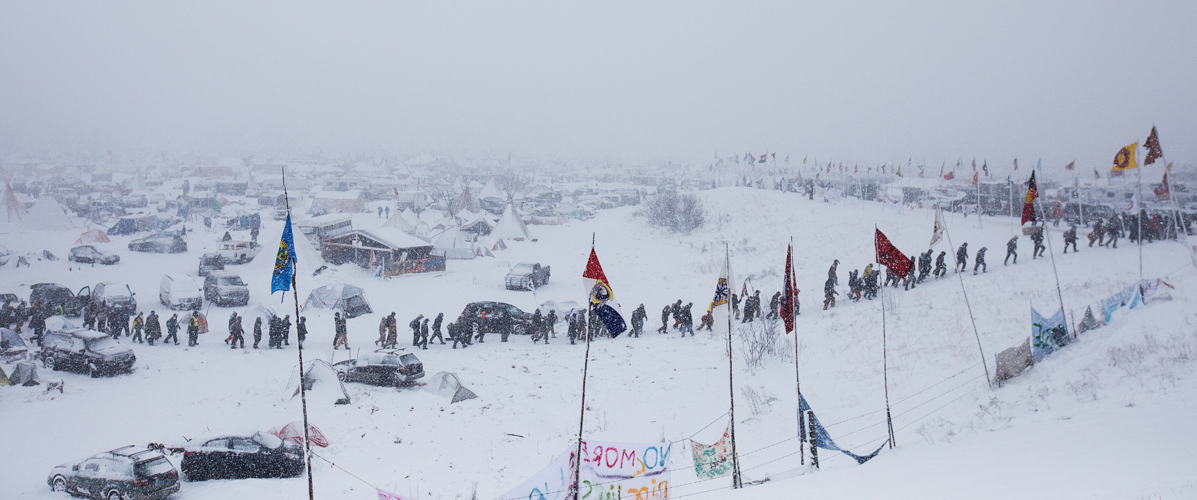
I couldn’t find the group. The compostable toilets they had been preparing were gone too. I asked people where I could find them but nobody knew. “People shift here all the time,” a young native man told me as he fitted the shoes to his feet.
In the evening a few of us warmed in D’s teepee. She busied herself organizing supplies and melting water while telling us stories. One such story was that of the water: Earlier in the fall two youths went around the camps asking people to join them in a ceremony the next morning. Hundreds of people gathered. The youths led the procession, holding a cup of blessed water in their hands. They walked all the way up to the barbed wire barricade on 1806. There they asked the security forces to drink with them from the cup. The security personnel looked to each other seeking orders, but one officer extended his hand and placed two fingers into the cup and then tapped them against his heart. That day two officers turned in their badges. “Something different…” D said, smiling a tired but blissful smile, “…it’s happening.”
There is no central governing body at the camps. This is a “group movement.” No one individual can make a decision for the collective. Everyone must trust the clarity of their own intentions. Many are leaving. Others are staying.
“This is about respecting agreements,” D said. Legal agreements and personal ones. Treaty rights, and human rights. The point is that if our laws have ceased to honor our original agreements, we have lost our way. This is how we get to the age of ‘post-truth.’
The next morning I rushed out to the daily orientation meeting at Oceti Sakowin. I noticed that overnight all the porta potties had disappeared. An excited husky walked with me this time, all the day to the Oceti Sakowin camp where it found someone else to play with. I ended up at the camp’s daily winterization meeting. There were no more orientation meetings. In a large dome, men and women, indigenous and not, huddled around two stoves. J, the facilitator, soon arrived and began the gathering by covering the basic agreements. “Each day we begin by recognizing our agreements. Our first agreement is that we are two-legged animals. Everyone can agree on that?” From there the agreements grow: agree that there is no one leader; agree that everyone has the right to be heard; agree that the water is sacred — every morning.
The conditions of the camps were addressed. The fire department is growing. The implementation of compostable toilets has to be implemented immediately. The medical teams are conducting regular check-ins. In lieu of the denied easement, direct action training personnel are withdrawing to redirect their energies towards the banks funding the pipeline.
Many in the room were practiced leaders, others were simply those who had stepped up at a key moment and taken on a necessary job. The camps were hunkering down for the winter, preparing to be here for when Donald Trump, a direct investor in the pipeline, would come into office. The dome was due to be packed down, and a more permanent structure was being constructed.
When I returned to Rosebud the bus was running. Another storm was moving in and if we were to beat it, we had to go. Three water protectors caught a ride with us back to Seattle, and we picked up another two later. We had now become a transport bus.
As we pulled out of the encampment I watched the dogs playing in the snow, chasing each other across the ice from Rosebud to Oceti Sakowin, as if there is no division at all.
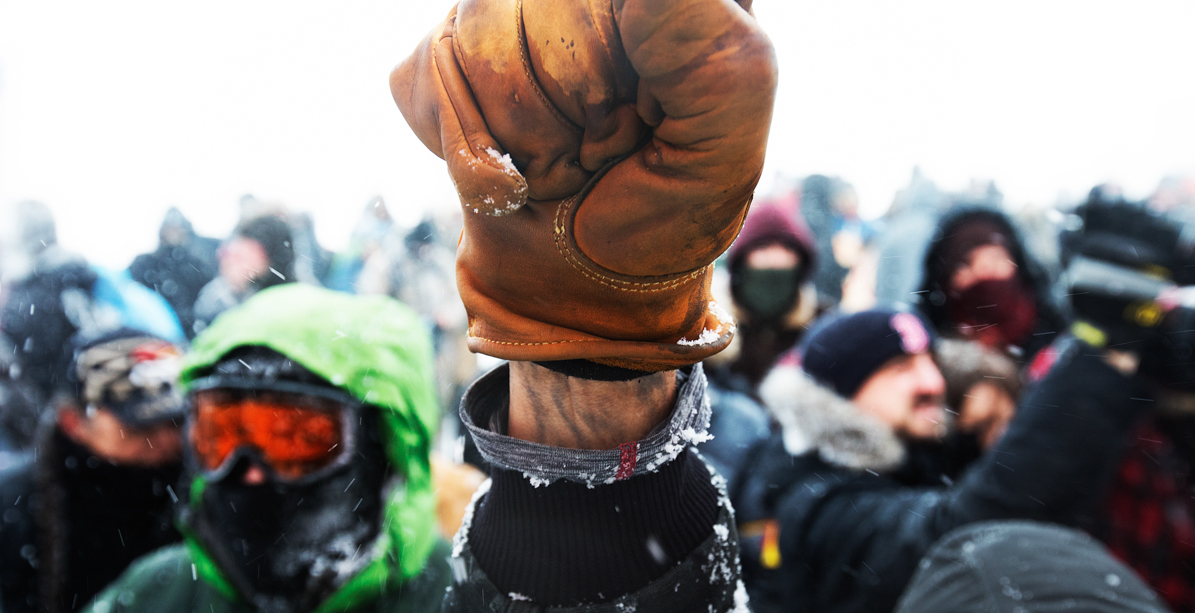
There is another prophecy told by the Lakota, foretelling a time when outsiders gather to join the tribes and work together and learn the language of the land. Those who remain at Standing Rock believe that that time is now. About 2500 protectors remain to monitor and to build something new.
The next day the elders had chosen to put out the sacred fire. Their original prayer had been answered.
Immediately after, the indigenous youth and the allies remaining at the camps lit a new fire and began a new prayer. The name of Oceti Sakowin (the camp of the Seven Council Fires) was changed to Oceti Oyate (the camp of All Nations). This was done with the support of the elders. The entire time this movement has been led by the youth. The elders had chosen to lend their experience to amplify the call, but the call, it is said, is always for the future, for the youth.
They are considered the 7th generation from the original wound, those awoke at the time when prophecies come alive. This is a generation that sees the past and the future equally, still in dialogue with the land and steeped in the stories of the elders but also connected to the outside world through social media and technology. They see the black snake prophesy and translate it into a future where the indigenous will stand together and equally with their allies to protect the sacred. They stand and vision together, healing America’s original wound.
We are a rare nation of divided groups, uniting for a time but almost always, ultimately, slipping back to the conditions of our divisions. No political movement has ever really been able to transcend this condition. But this is the potential of Standing Rock, that it can show us something else, a way to unite across a set of inalienable agreements.
Our bus grumbled along in the blizzard as we sat in silence, perhaps each still privately trying to contextualize what we did and why we did it. And then our new passengers came awake and began sharing.
If you wish to support Standing Rock the best way to do so is through donations and by speaking out, through action and monetary pullout against banks which support the pipeline. If you wish to learn more, there are numerous articles on the net. I recommend indigenous media for the source. If you wish to follow the source of the fire there are many voices in the community. I recommend following Chase IronEyes and LaDonna Brave Bull Allard, because though there are no single leaders, there are those on the land and have been on the land all along and thus can speak straight from the land.
